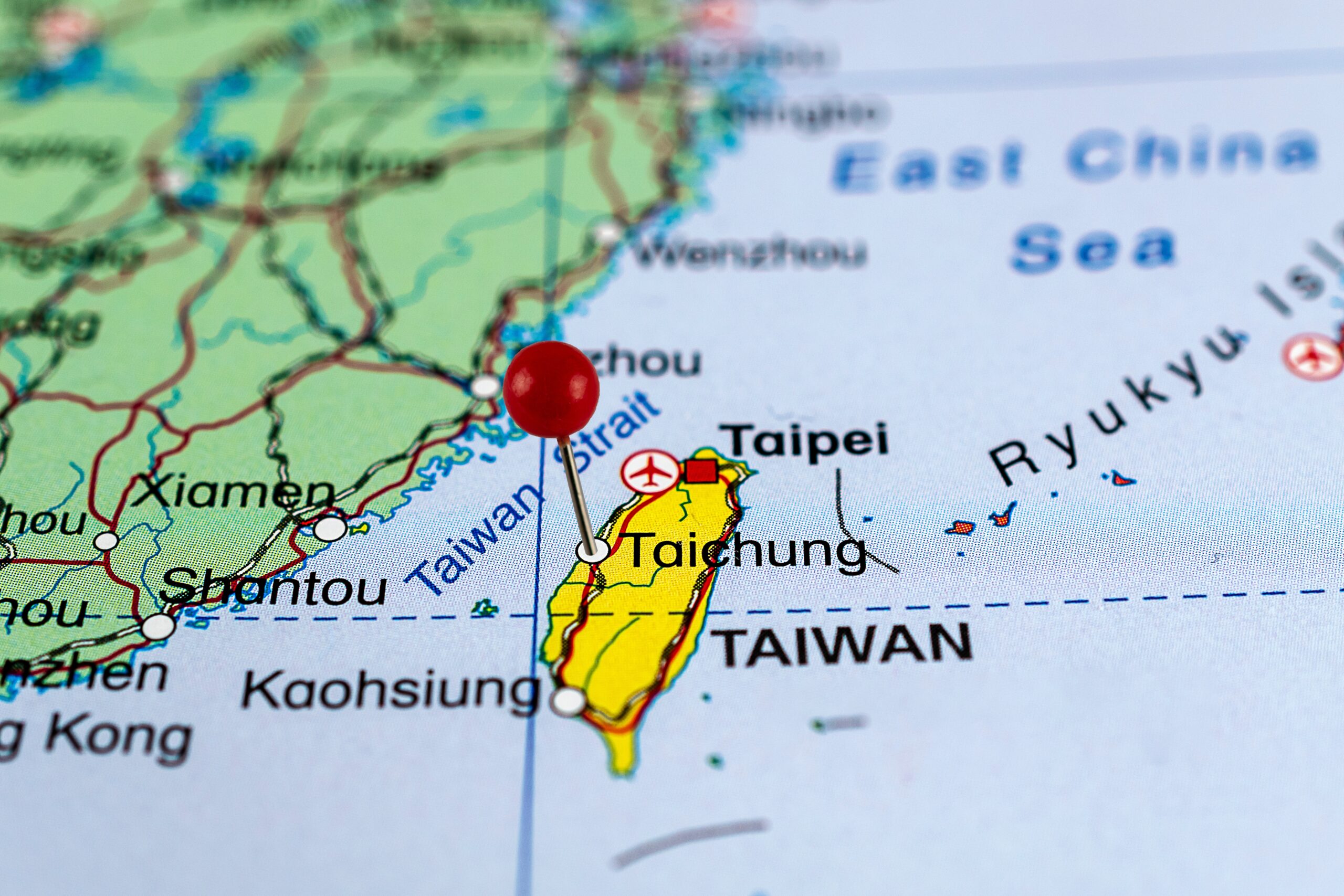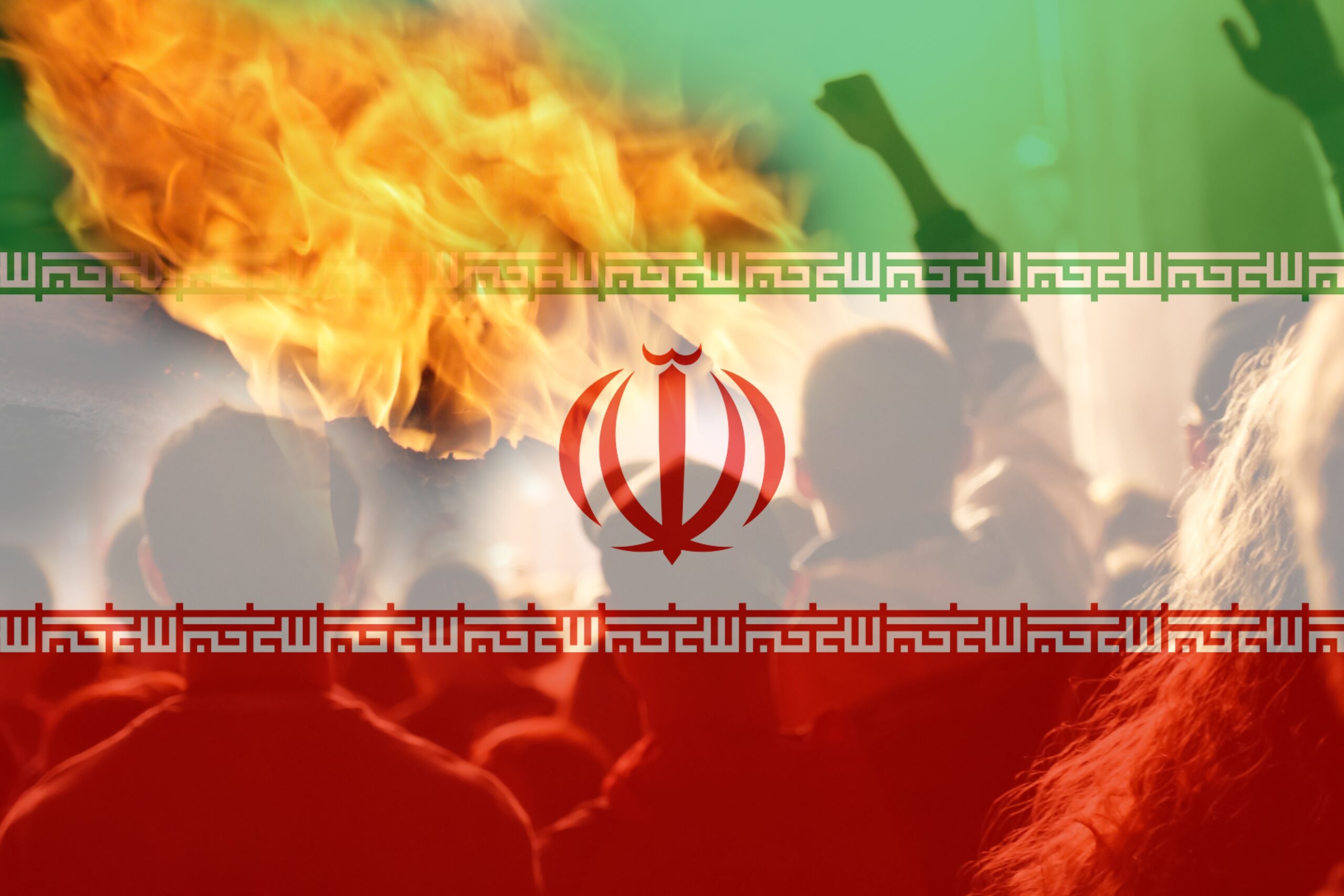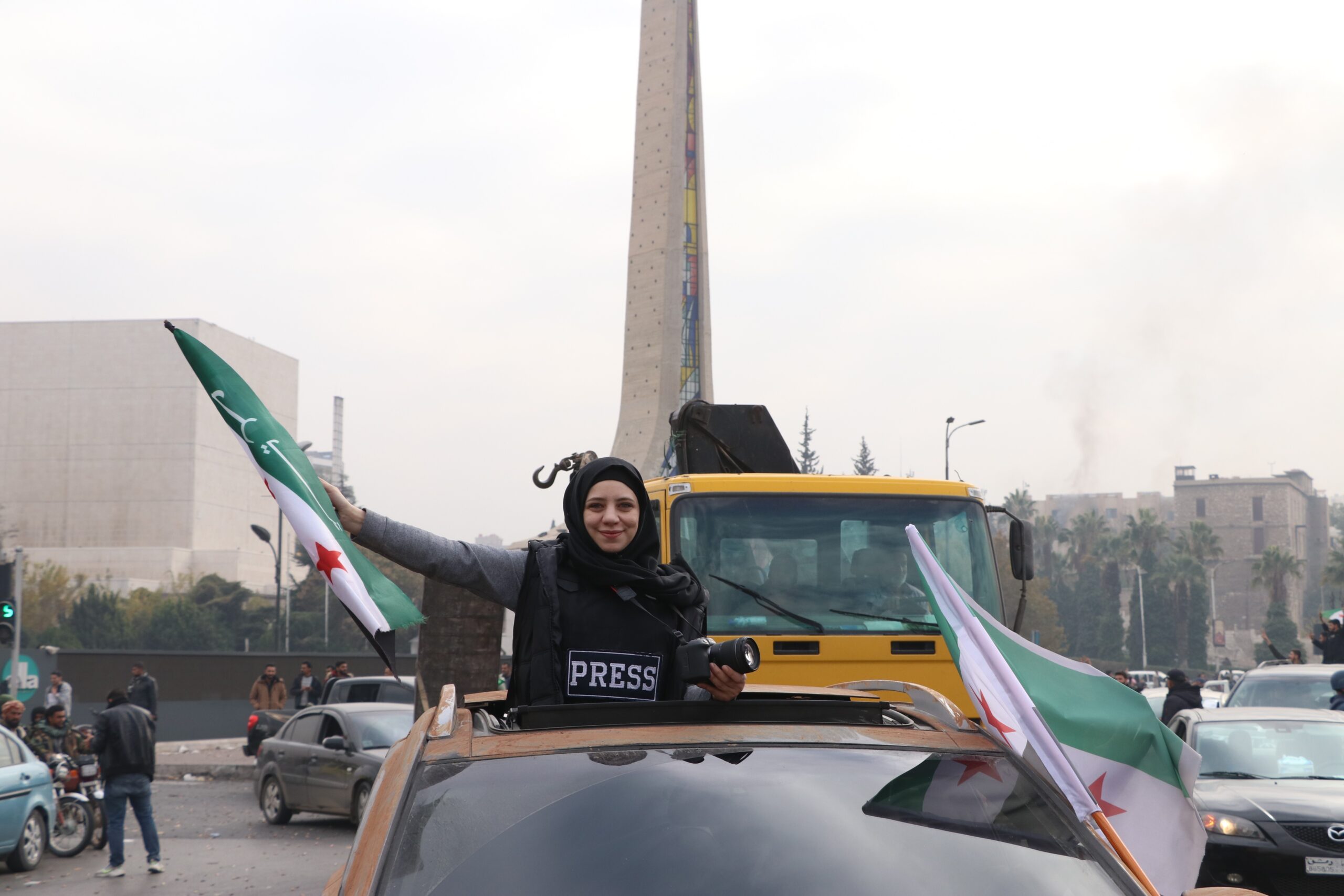|
Getting your Trinity Audio player ready...
|
For three decades, Beijing has been busily assembling one of the largest amphibious naval fleets in the world, as well as producing numerous commercial ferries and transports that are designed for dual use. The most recent People’s Liberation Army Navy (PLAN) ship designs are quite ingenious, and they are unlike those of any other nation.
This article is the third in Greymantle’s special, six-part limited series exploring the growth of the People’s Liberation Army-Navy and China’s detailed preparations for subjugating the island of Taiwan.
Greymantle concludes that China will attempt to subjugate Taiwan in the near term (2025-2029) either through the combination of a naval blockade and parallel political pressure, or through a rapid shift from a blockade to a direct, amphibious invasion of the island nation. For China, invading Taiwan presents enormous risks, but also potentially enormous benefits if Chinese forces are able to swiftly subdue the island.
Today’s article explores the military assets – particularly the amphibious naval and commercial vessels, as well as specific units of specially trained troops – that the People’s Republic is most likely to deploy when assaulting its “rogue province,” Taiwan. In addition, we focus on the main Chinese invasion risks associated with any attempted amphibious landing on Taiwan.
The core question we pose is whether China’s amphibious toolbox of ships, weaponry, and manpower, as presently constituted, is big enough to do the job. Based on publicly available information, Greymantle believes the answer is ‘no’. Read on for a detailed discussion of why we believe that to be the case.
NEW BARGE SHIPS WILL EASE LANDINGS, NOT ONLY ON BEACHES
As mentioned at the start, Beijing has spent three decades assembling one of the largest amphibious fleets in the world, as well as designing numerous commercial ferries and transports for dual commercial-military use. Chinese military leaders believe strategic and tactical flexibility, including innovative ships designs, to be at the core of any favorable resolution – favorable to China, that is – of the China Taiwan conflict.
The unique suitability of the PLAN’s latest assets for an amphibious landing has been revealed by Western spy satellites. For instance, the Economist recently reported on one new ship’s features (March 22, 2025):
“Is it a bridge? Is it a barge? [In fact] It is both…. It has legs that could drop down to stabilize the craft in shallow water and [wield] a boom-bridge that could extend from the bow and onto a beach.”
This awkward vessel is able to form links with others of its type, each with a 100-meter causeway, to allow landings farther out from the shoreline. Moreover, it also sports sea-flow well docks where four smaller ferries or landing craft can securely attach themselves.
The floating bridge-barge would save invading troops and vehicles from the necessity of disembarking in Taiwan’s famously choppy surf or slogging over the island’s extensive coastal mudflats (frequent on Taiwan’s narrow western coast) to a serviceable road, all while under — it must be presumed — a rain of heavy Taiwanese artillery fire.
According to the Economist’s analyst, a force equal to roughly a mechanized brigade (4,000-6,000 men and their accompanying armor – tanks and armored personnel carriers) could be quickly moved to almost any location near a coastal road, not necessarily a beach, when smaller landing craft attach to this vessel.
The bridge-barge would be too clumsy and slow to participate in China’s initial shock assault on Taiwan’s coastal defenses. Once a strategic strip of coast has been secured by advance troops, however, this unique vessel could bring significant numbers of reinforcements ashore quickly. The Economist believes that seven such vessels exist, with more under construction as we write.
NAVAL WARPLANES WILL HELP ESTABLISH DOMINANCE OVER TAIWAN’S AIR SPACE
The size of the People’s Liberation Army-Naval Air Force (PLANAF) is also considerable, consisting of over 700 planes including 120 fighters.
Much has also been made of China’s new Type 076 amphibious aircraft carrier, the Sichuan; no other navy in the world has anything like it, in terms of either size or functionality.
There isn’t any need, however, for the Chinese to risk harm to this new vessel or to any of their three other, precious new aircraft carriers in their first-wave operation against Taiwan. China’s relatively safer onshore bases could easily launch sufficient PLANAF naval warplanes to join the massive air attacks.
PLANAF warplanes will be tasked with establishing China’s air superiority through the destruction of the Taiwanese air force – preferably while it’s still on the ground, or through a continuous cycle of aerial dogfights if the Taiwanese planes are able to get airborne in advance of the PLANAF’s first sorties.

Chinese fighter planes in attack formation
China will likely commence its amphibious action with wave upon wave of bombers, fighters, drones, and missiles targeting Taiwan’s military assets, communication networks, and governmental and civilian power infrastructure. Such attacks will continue as the invasion fleet leaves mainland ports and heads southwest.
Like most military analysts, Greymantle believes that Taiwan’s air force – whose pilots and equipment are quite good — will likely be neutralized within two to three days after the invasion’s start, given China’s overwhelming numerical superiority.
The People’s Liberation Army Air Force deploys 3,309 aircraft versus Taiwan’s considerable 760, a ratio of more than 4:1. The Chinese Navy’s 700 planes will also contribute, driving the odds even higher.
The same fate is probable for the Republic of China’s (ROC – Taiwan’s official name) small but professional navy, although a few Taiwanese submarines may take a toll on their mainland attackers before they are hunted down by mainland anti-submarine vessels or by attacking Chinese submarines.
Even if stripped of their fixed-wing air defenses, however, the Taiwanese still possess significant quantities of their own drones, as well as attack helicopters, and short-range or mobile missile systems such as the U.S. Aegis defense system. All are easy to shelter or hide, and thus will survive. Absolute control of the air thus cannot be guaranteed over a specific locale at all times.
Destruction of manned Taiwanese aerial assets could also take several days longer than expected if they stay close to the island, as they will benefit from integration with ground-based air-defense systems. Not all Taiwanese planes are sheltered within bunkers, but all airfields would soon be rendered unusable.
PLAN’S AMPHIBIOUS FLEET CONTAINS IMPRESSIVELY DIVERSE ASSETS
The following is a brief list identifying the major amphibious ships and other naval assets that will form the core naval hardware (i.e. naval toolbox) to be deployed against Taiwan, their sizes, and their functions.
Type 071 Landing Platform Dock: As of 2024, eight of these major vessels have been deployed (displacement 25,000 tons). Each has a flight deck, and they carry 4 helicopters, 4 hovercraft, 60 armored fighting vehicles, and 600-800 marines. They are also the Chinese military’s preferred choice for an on-site headquarters to oversee the operation.
Type 072 (Yukan-class): These are basically tank-landing ships (displacement 4,237 tons). Their primary mission is transporting troops, heavy armor, and supplies for direct beach landings. Four are listed as active; their capacity is 10 main battle tanks, or 200 men and equipment.
Type 073A (Yunshu-class): These medium landing ships (displacement 2,000 tons) are designed for direct amphibious-assault operations, transporting either 10 light tanks, or personnel carriers as well as artillery, or 500 marines close to a beachhead. Ten such ships were active as of 2022.
Type 074 (Yuhai-class): This PLAN workhorse is used for tactical beach landings and can deliver 2 main battle tanks, or 6 light amphibious ones, or 350 troops, or 100 tons of supplies. As of 2024, 12 are active (displacement 800 tons, when fully loaded).
Type 075 Amphibious Assault Ship (Helicopter) (Yushen-class): As of 2023, these three (now likely four) ‘large landing helicopter docks’ (LHDs) have a flight deck and 28 helicopters. They serve as off-beach amphibious assault ships, capable of staging quick vertical envelopments and rapid battalion-sized operations. (Displacement 30,000-40,000 tons). They also carry 800 marines, 60 armored vehicles, and – believe it or not – two hovercrafts.
Smaller Landing Craft and Amphibious Support Vessels: These vary in size, generally displacing less than 1,000 tons, supplementing PLAN’s 38-45 main amphibious ships. They are numerous, but their exact numbers have been very hard to pin down.
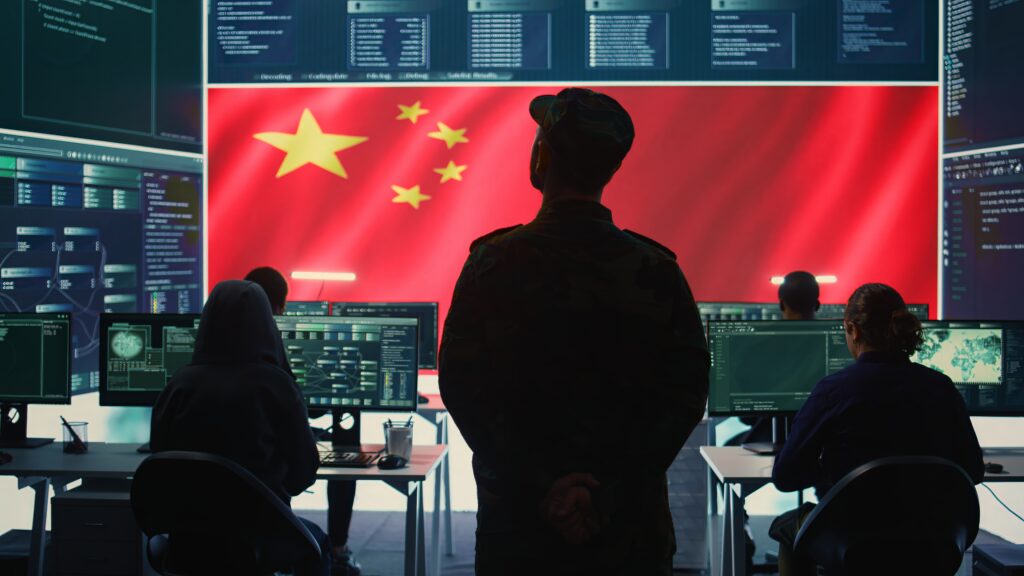
MINESWEEPERS WILL BE CRUCIAL TO CHINA’S CROSS-STRAITS SUCCESS
Chinese minesweepers will play a critical role in an invasion, clearing the plethora of mines Taiwan will seed through the sea pathways to its beaches.
Over three decades, the PLAN has developed various classes of minesweeping vessels. The most advanced model is the Type 081 “Vortex,” which is among the best of its kind in the world.
The total number of these craft is a bit hazy. In general, medium-sized minesweepers displace 500-600 tons, and they are capable of clearing mines at depths of 30-50 meters. Large minesweepers displace 600-1,000 tons or more, and they can clear mines down to 100 meters.
The Taiwan Strait has an average depth of about 70 meters, or 230 feet, making it relatively shallow compared to other major straits globally. This feature makes it easier for the majority of the PLAN’s minesweepers to be effective, but their work will inevitably slow down the amphibious armada following behind them.
Nevertheless, the work of minesweeping must be done even while surface attacks and Taiwanese missiles assail the invading armada. The process cannot be rushed, because missed mines will be absolutely devastating to the Chinese attack.
If mines were to sink even two of the PLAN’s Yukan class tank landing ships, for example, it could leave the invading infantry struggling mightily to establish a beachhead. Mobility, morale, and counterattacks would all be diminished without sufficient armored back-up.
FORMIDABLE AMPHIBIOUS MILITIA WOULD SUPPORT NAVY AFTER BEACHEADS ARE SECURED
The prior discussion only addressed PLAN’s official naval assets. Beijing will not rely solely on regular naval vessels, however. It has also been busily modifying its commercial ferries and vehicle transports for years so that they can also function as a kind of amphibious militia when called to duty.
China’s amphibious militia will carry combatants and their vehicles to support an invasion. All these civilian craft are capable of easily crossing and recrossing the 100-mile strait at least once per day.
China places particular faith in its Roll On-Roll Off (RO-RO) vessels. These have been seen (by Western spy satellites) training in PLAN exercises. China is believed to operate nearly 100 of these leviathans, although they vary in size. To give some idea of their scale, the biggest displace 20,000-50,000 tons, or about as much as the Chinese aircraft carriers. The latter can transport up to 9,400 vehicles.
Once a beachhead or a lodgment near a road has been firmly secured by the initial wave of troops, modular barges can be sailed in to lock together, forming an artificial dock. (Note that these are not easy to manage, as the United States learned the hard way in its failed attempt to supply Gaza last year.)
Thus, subsequent waves of civilian transports can disgorge troops, trucks, armor, and supplies onto these make-shift piers, while the PLAN’s ships return to reload. Some of the ferries have now been fitted with well docks, as well, allowing them to stay a few miles offshore and launch amphibious tanks or other personnel carriers to complete the assault.
TIP OF THE SPEAR: MARINES, ARMY AMPHIBIOUS, AND PARATROOPERS
China’s amphibious soldiers are members of two distinct armed services: the Navy and the Army. The Army had these trained units long before the Navy had its own sea force. To kick-start its new marine corps, the Navy requested and received one of the People’s Liberation Army’s brigades. Six amphibious brigades remain within the PLA.
There are now eight brigades in the People’s Liberation Army-Navy Marine Corps (PLANMC). They consist of six combined arms units, as well as two specialized units – the special operations and airborne (helicopter) brigades. Each of these is officially comprised of 7,000 personnel, but they likely average closer to 5,000. This results in a total initial PLANMC force of around 40,000 men.
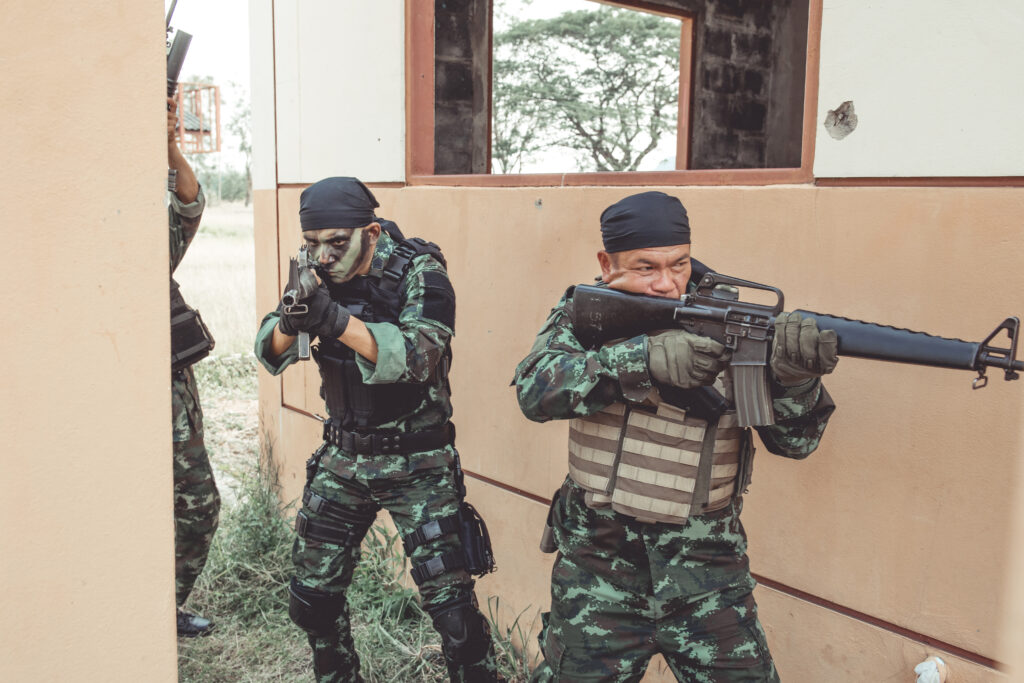
PLANMC commandos rehearsing tactical drills
Every combined arms unit is equipped with its own set of amphibious assault vehicles, armored personnel carriers, light tanks, and self-propelled artillery. A US Marine artillery unit might well have longer range, but less mobile, guns. The Chinese equivalent carries more full firepower.
The aviation component also operates attack, cargo, and utility helicopters. Two of the PLANMC’s brigades are based in China’s Eastern Theatre of operations, so they will, in all likelihood, be part of the first wave.
The Army’s 1st Amphibious Mechanized Infantry Brigade, which also uses amphibious tanks, armored vehicles, and landing craft, would also participate in any amphibious invasion of Taiwan. This branch of the ground forces is able to deploy several similar units shaped to complement the PLANMC. Numbers are uncertain, but this arm of the PLA likely matches those of the marines in overall personnel.
Finally, the People’s Liberation Army Air Force (PLAAF) Airborne Corps consists of six airborne brigades, as well as one trained in special operations. The total strength of this service is estimated to be 30,000 personnel, most of which are paratroopers.
Once China achieves near-total air dominance (never total, given Taiwanese drone and missile activity) of Taiwan’s airspace, paratroopers are likely to be among the first wave of invaders. Still, this is risky. The rough mountain range running up and down two-thirds of the island, added to Taipei’s keen awareness of potential drop zones, greatly magnifies the level of risk for China’s airborne troops.
Any large-scale attempt to land paratroopers (or helicopter-born assault marines, for that matter) might very well produce very high casualties. This dangerous probability doesn’t mean that China will not attempt smaller, well-targeted parachute missions.
During the first wave of China’s overall assault, paratroop units might seize key terrain behind defensive lines, disrupt coastal defenses, and support the broader amphibious operations. Once the main assault wave secures a safe area, the paratroopers could also be dropped in to serve as valuable reinforcements.
WHAT FINALLY GETS ASHORE. AND…IS IT ENOUGH TO DO THE JOB?
Greymantle estimates theoretically that — if all PLAN’S assets were simultaneously operational (which is unlikely) – the Navy could land an initial 20,000-25,000 Chinese advance troops, about 1,700 average-sized fighting vehicles, and some essential supplies.
This would be equivalent to about 4-5 lightly armored infantry brigades of 4000-5000 combatants each.
Allowing for the inevitable casualties sustained as the amphibious vessels carrying these troops approach the Taiwanese shore – harried as they will be by missiles, drones, artillery, and, of course, mines — this advance force thus would not arrive intact, perhaps sustaining a 20% reduction in force before they even hit the beach.
Avoiding an even greater reduction in force will depend on just how effective Chinese suppressive fire, air cover, and minesweepers have been.
Then, the first wave’s units will have to carve out a secure, defensible lodgment – or two – so that the second wave can land supplies for them, and also so that reinforcements can get to them unhindered.
Just for the sake of reckoning, let us assume that Strait-crossing casualties have been light. Roughly 40,000-45,000 men, 3,200 armored vehicles, and a minimum of vital supplies may have disembarked by the invasion’s fourth day. By then, most amphibious militia have off-loaded men and vehicles and their basic supplies.
How does this measure up, historically?
HOW CHINA’S INVASION PLAN COMPARES WITH OTHER MAJOR AMPHIBIOUS ASSAULTS
In the last century, only three examples exist of an amphibious assault on this scale: D-Day June 6, 1944 (first day – 156,000 men landed, with 23,000 airborne): Gen. Douglas MacArthur’s (“I Have Returned”) October 20, 1944 Philippines landing on Leyte Island (200,000 in the first day); and Inchon, Korea on September 15, 1950 (40,000 by the end of 24 hours – MacArthur again).
Like China is favored to achieve in the near future, the invaders in the above situations all enjoyed air/sea dominance.
But there the similarity ends… In each case, the three landings referenced above were something of a surprise to the German, Japanese, and North Korean defending forces; moreover, the attackers considerably outnumbered the defenders. Neither condition would be true in this invasion.
After all, we live in an age when the earth is orbited by thousands of commercial and military satellites, all peering down greedily to monitor the movements of people, ships and planes. There are no major ‘sneak attacks’ anymore in the 21st century. One notable characteristic of Indo-Pacific geopolitics, in fact, is the relatively high visibility of strategic moves made by all parties.
In addition, each historical amphibious landing required many more amphibious craft than China currently appears able to muster, even allowing for the dragooning of its ferry fleet.
D-Day employed nearly 7,000 ships and about 4,000 landing craft; the Philippines required 470 ships and 280 landing craft; Inchon used 271 ships and 40 landing craft. These were mostly used in repeat waves by 2,500 marines against a single defended beach. In the Korean War, the port of Inchon itself was captured pretty much intact. This allowed regular supply ships to unload quickly.
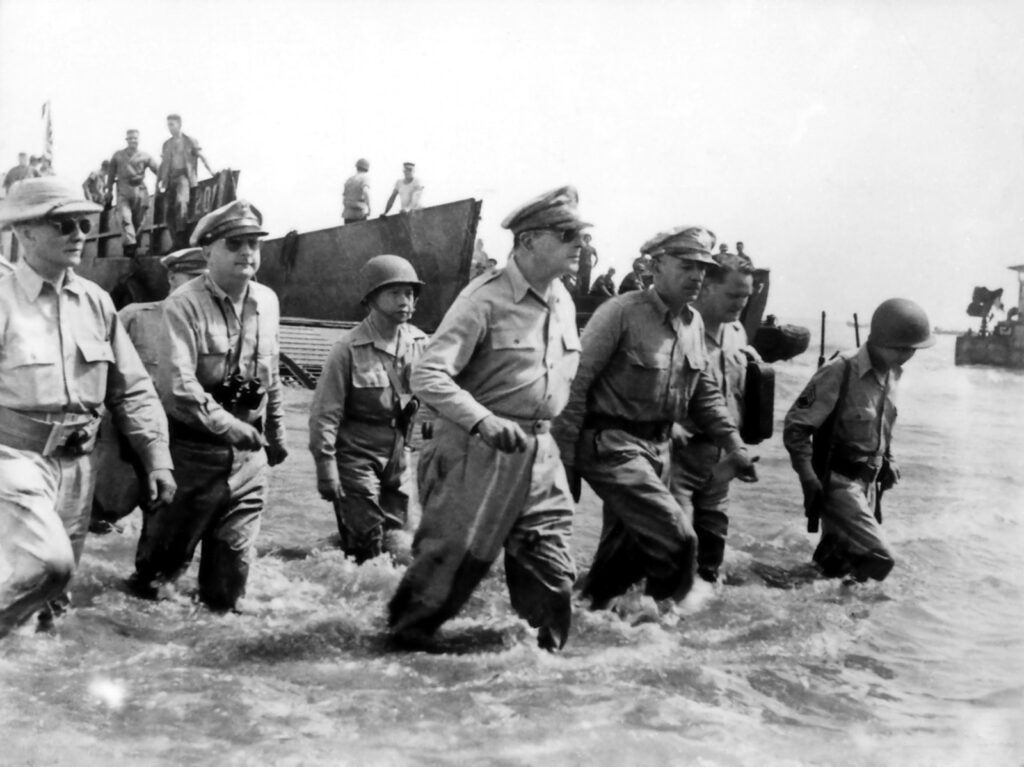
The key difference between those earlier landings and China’s invasion plan for Taiwan is this: China faces the considerable challenge of establishing a contested foothold, perhaps in several places, against a prepared enemy who knows that they are coming and has had – literally – decades to prepare itself.
And the longer Taiwan delays, disrupts, sabotages, and fights, the more likely its powerful friend will change its mind about intervening on its side against China, and put its heavy hand on the scale. U.S. Taiwan defense has always contained a strong element of unpredictability, and this quality is viewed as a major risk to China by Chinese military strategists.
The Taiwanese will undoubtedly receive heavy pre-landing fire. Despite this, Greymantle’s opinion is that enough troops, missiles, attack helicopters, land mines and artillery will survive to vigorously resist the advances of the surviving 40,000 (or less) mainland troops clinging to their landing sites. The islanders’ defenses will also be aided by Taiwan’s rugged and heavily urbanized terrain.
Taiwan’s military may also greatly diminish the more vulnerable supply-laden second wave. If so, then the first wave’s situation on the beaches could quickly become untenable, particularly if ammunition runs low.
So, how many ashore troops would be required to push the defenders aside and clear out wide, safe landing zones?
Greymantle’s estimates that 100,000 supplied combatants (16.5 full brigades) would be necessary to advance inland by the end of the third day. Clearly, this means that China requires an amphibious arm at least double in size to what it presently has. At this point, PLAN and the amphibious militia can’t be certain of delivering manpower sufficient to move much past their initial landing.
Richard Jupa, May 13, 2025
* * *
This has been the third in Greymantle’s six-part exploration of the expansion of the Chinese navy and China’s plans for a blockade and invasion of Taiwan.
The next article will review the likely successive steps in the all-important first phase of China’s invasion of Taiwan. The fifth article will then consider Taiwan’s ability to resist an amphibious invasion without the United States’ help. The sixth, and final, article in our series will consider what will happen if it does.
Will the hedgehog bloody the dragon and blunt the force of its bite?

